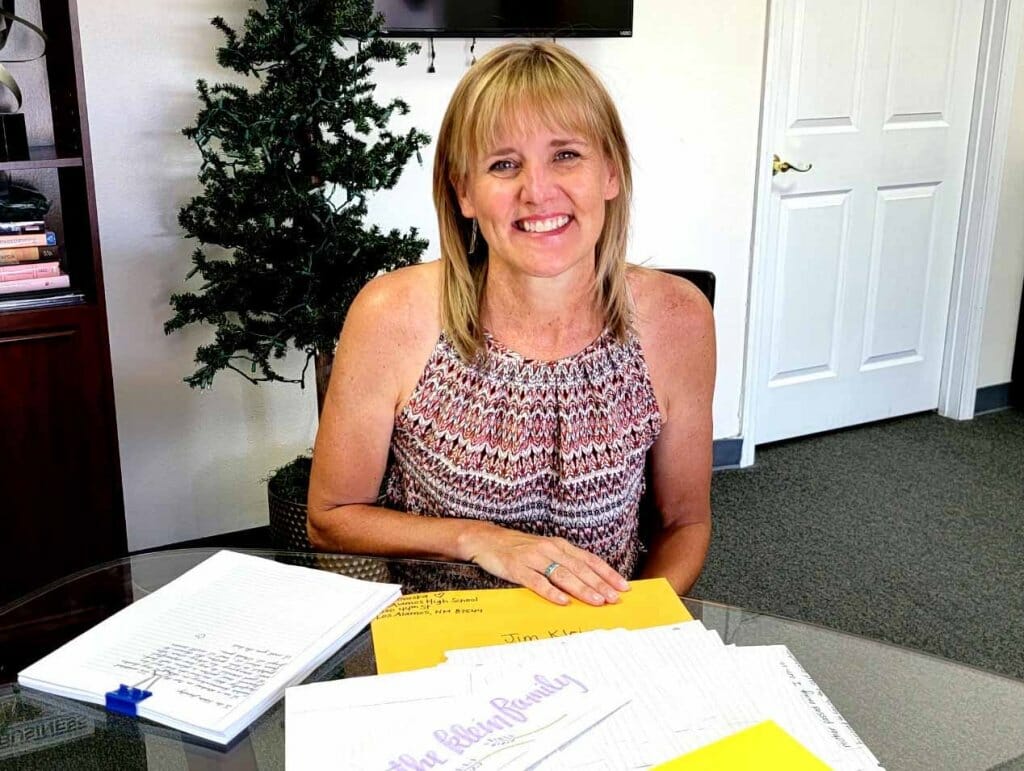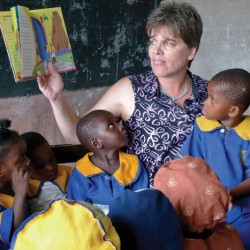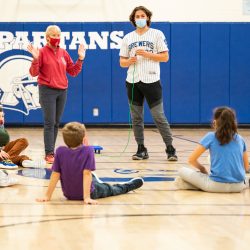Lessons in Gratitude
Lynn Ovaska ’96 teaches her high school students the power of saying “thank you.”

Ovaska: “Having kids do something that’s going to change their life is unbelievably powerful.” Courtesy of Lynn Ovaska
Today’s teenagers have watched their schools become battlegrounds for the most contentious issues of the day while weathering the standard struggles of the high school experience. Still, they carry themselves with admirable grace — sometimes with a little help along the way.
In her classroom in Los Alamos, New Mexico, high school psychology teacher Lynn Ovaska ’96 creates a “sacred space” in which her students are comfortable being vulnerable and studying topics like genuine happiness and how to achieve it. One way she does this is by having students write gratitude letters to individuals who have had an impact on their lives.
“The letters are more than thank-you notes,” Ovaska says. “They’re letters of gratitude, but they’re also letters of apology, forgiveness, and honesty.”
Ovaska uses the exercise — drawn from Martin Seligman’s book Authentic Happiness — to illustrate the difference between temporary and long-term happiness as part of the emotion unit in her AP Psychology course. To ensure that her students experience the happiness of sharing their heartfelt messages, Ovaska encourages them to personally read the letters to the recipients.
“This is an exchange,” she says. “When you write a letter and you hand it to someone and then walk away, you did your part, but you didn’t get back what their response was to that letter.”
These emotional exchanges were captured in a “There’s Good News Tonight” segment of the NBC Nightly News in November, after a production team joined Ovaska’s class for a moving day of writing and reading gratitude letters. The segment features students reading letters to grandparents and former teachers and aloud to the class. According to Ovaska, there wasn’t a dry eye in the room, on camera or off.
“You can’t plan that stuff as a teacher,” Ovaska says. “It was a true emotional, physical change that kids experienced in the room.”
Ovaska keeps her own teeming box of letters from former students near her desk as a reminder of the power of simple acts of kindness. Of all the lessons she instills in her students, this is the one she hopes they will carry with them well beyond the classroom.
“That’s when learning takes place. It doesn’t have to be complicated,” Ovaska says. “Having kids do something that’s going to change their life is unbelievably powerful.”
Published in the Summer 2023 issue



Comments
Ming Wei August 2, 2023
Thank you for this article!
As a student, I can only imagine the effect a teacher or public servant feels when one of their impactees lets them know the extent of the impact they had.
Oscar Skiöld August 21, 2023
Thank you susan